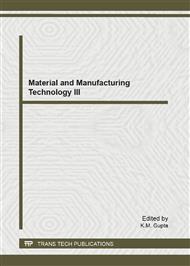p.819
p.824
p.828
p.833
p.839
p.843
p.848
p.853
p.860
Estimating Measurement Error Based on Evidence Theory
Abstract:
Measurement error is traditionally represented with probability distributions. Although probabilistic representations of measurement error have been successfully employed in many analyses, such representations have been criticized for requiring more refined knowledge with respect to the existing error than that is really present. As a result, this paper proposes a general framework and process for estimating the measurement error based on evidence theory. In this research cumulative belief functions (CBFs) and cumulative plausibility functions (CPFs) are used to estimate measurement error. The estimation includes two steps:(1) modeling the parameters by means of a random set, and discrediting the random set to focal elements in finite numbers; (2)summarizing the propagation error. An example is demonstrated the estimation process.
Info:
Periodical:
Pages:
839-842
Citation:
Online since:
July 2012
Authors:
Price:
Сopyright:
© 2012 Trans Tech Publications Ltd. All Rights Reserved
Share:
Citation:


